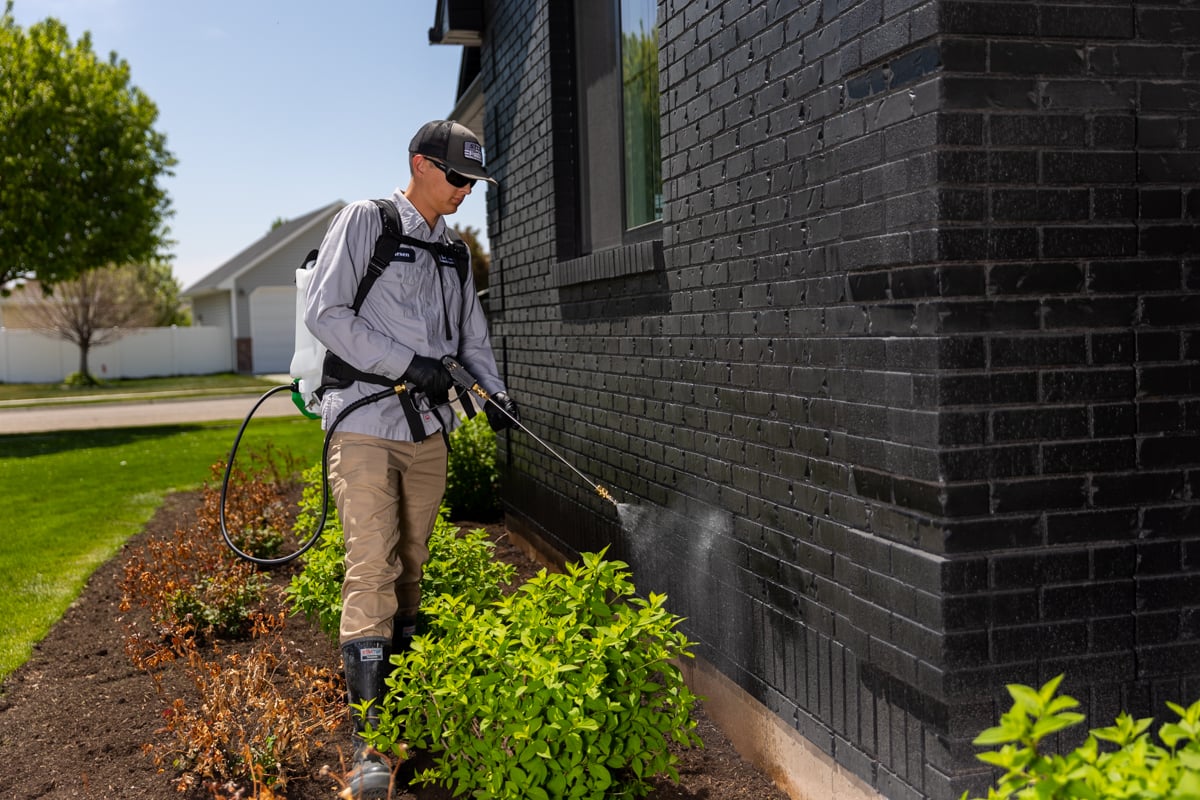A1 Pest Control Charlotte NC Bed Bugs - Expert Extermination Services
A1 Pest Control Charlotte NC Bed Bugs - Expert Extermination Services
Blog Article
Bed Pest Therapy Break Down: Comparing Chemical Vs. Non-Chemical Solutions
In the realm of pest control, specifically when taking care of the relentless concern of bed bugs, the selection in between chemical and non-chemical treatment services can be a critical one. Both techniques offer distinct advantages and disadvantages, affecting elements such as performance, safety and security factors to consider, and total cost. By analyzing the nuanced information of each approach, a more clear understanding of which course to pursue in attending to a bed pest problem can be achieved.
Efficiency of Chemical Treatments
Chemical therapies for bed pest invasions have actually been commonly acknowledged for their rapid and powerful efficacy in eliminating these insects. When thinking about the efficiency of chemical treatments, it is important to recognize that they can give a comprehensive and quick option to a bed pest trouble.
Moreover, chemical therapies have the advantage of offering residual impacts, meaning that they can remain to remove bed bugs also after the first application. This recurring activity is especially advantageous in combating any potential re-infestations. Additionally, the rapid activity of chemical treatments can bring alleviation to people facing serious bed insect infestations, allowing them to reclaim control of their living rooms quickly.
Safety Worry About Chemical Solutions
One essential element that needs cautious consideration when making use of chemical remedies for bed pest therapy is ensuring the safety and security of occupants and the setting. Exposure to specific chemicals made use of in bed insect therapies can lead to respiratory problems, skin irritation, or various other adverse responses, particularly in people with pre-existing conditions or sensitivities.
Moreover, the environmental influence of chemical services is another substantial factor to consider. Some pesticides utilized in bed pest therapies may be harmful to beneficial bugs, wildlife, and ecological communities if they seep right into the soil or water systems. It is necessary to use chemical therapies carefully, following safety and security standards, and taking into consideration much less poisonous options to reduce these threats and guarantee the effective and safe administration of bed pest problems.
Benefits of Non-Chemical Methods
Thinking about the prospective security concerns and environmental impact associated with chemical options for bed insect therapy, checking out non-chemical approaches presents an encouraging option with numerous unique advantages. Non-chemical treatments are environmentally pleasant, as they do not add to air or water contamination, making them a lasting selection for pest control.
In addition, non-chemical options can be effective in targeting bed bugs, consisting of hard-to-reach areas where chemical treatments might not pass through. Approaches such as warmth therapy, vacuuming, heavy steam cleansing, and cushion encasements give detailed elimination without making use of unsafe chemicals. Additionally, non-chemical methods can be much less turbulent, requiring marginal preparation and permitting for quicker reentry right into treated locations. Generally, selecting non-chemical bed insect therapy techniques not just prioritizes security and environmental management however additionally makes sure efficient and thorough parasite control.
Limitations of Non-Chemical Treatments

In addition, non-chemical therapies commonly need multiple applications to accomplish effective elimination. This can be time-consuming and may not constantly guarantee total elimination of all bed insects and their eggs, specifically in surprise or hard-to-reach areas.
Moreover, the success of non-chemical therapies heavily counts on correct application and thoroughness, which can be testing for people without professional knowledge. Poor application of non-chemical techniques might cause insufficient eradication, leading to persistent invasions and the requirement for extra therapies.
For that reason, while non-chemical therapies have their advantages, it is important to recognize these limitations and consider them when determining the most efficient sites strategy for taking care of bed bug problems.
Cost Contrast: Chemical Vs. Non-Chemical Options
Offered the restrictions linked with non-chemical treatments, a necessary facet to examine in the context of bed insect monitoring is the price comparison between chemical and non-chemical choices. Chemical therapies generally entail the application of insecticides by experts, which can range from $250 to $900 per space, depending upon the seriousness of the invasion and the size of the area to be dealt with. In comparison, non-chemical treatments like heat therapy or vapor can be a lot more expensive, with prices varying from $1,000 to $6,000 for an entire home. While the initial price of chemical therapies might seem reduced, multiple therapies might be called for to totally eradicate the infestation, potentially raising the total price. On the various other hand, non-chemical options may give an extra green and sustainable solution, although they can be cost-prohibitive for some people. Ultimately, when taking into consideration the expense of bed pest treatment alternatives, it is vital to weigh the ahead of time expenses versus the effectiveness and long-lasting sustainability of the chosen technique.
Conclusion

Considering the possible safety concerns and environmental influence linked with chemical solutions for bed pest therapy, discovering non-chemical strategies offers an encouraging alternative with several distinct advantages.Given the constraints connected with non-chemical treatments, an important facet to examine in the context of bed bug monitoring is the cost comparison between chemical and non-chemical choices. In contrast, non-chemical therapies like warmth treatment important link or heavy steam can be a lot more expensive, with costs ranging from $1,000 to $6,000 for a whole home. While the preliminary price of chemical treatments might appear reduced, multiple therapies might be needed to totally eliminate the invasion, possibly boosting the overall expense.In conclusion, when contrasting chemical and non-chemical bed bug treatment options, it is crucial to think about performance, security, benefits, constraints, and expense.
Report this page